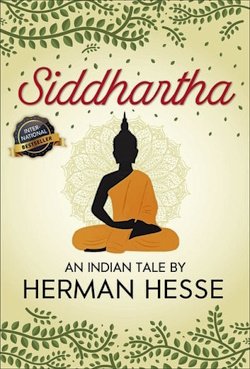“No longer, I want to begin my thoughts and my life with Atman and with the suffering of the world. I do not want to kill and dissect myself any longer, to find a secret behind the ruins.”
Out of this moment, when the world melted away all around him, when he stood alone like a star in the sky, out of this moment of cold and despair, Siddhartha emerged, more a self than before, more firmly concentrated. He felt this had been the last tremor of the awakening, the last struggle of this birth. And it was not long until he walked again in long strides, started to proceed swiftly and impatiently, heading no longer for home, no longer to his father, no longer back.
36
Siddhartha: An Open-Source Text

Chapter 4. Awakening
Country Scene, Antiquities Project
Topics Worth Investigating
1. As a Samana, Siddhartha says that as he sought Atman in mediation, and in the process, he lost his self. He says he knows nothing about this self because he was afraid of himself. Is it possible that one must “know thyself” in order to overcome self. Plato relates the following discussion between Socrates and Alcibiades:
SO. And if the soul, my dear Alcibiades, is ever to know herself, must she not look at the soul; and especially at that part of the soul in which her virtue resides, and to any other which is like this?
AL. I agree, Socrates.
SO. And do we know of any part of our souls more divine than that which has to do with wisdom and knowledge?
AL. There is none.
SO. Then this is that part of the soul which resembles the divine; and he who looks at this and at the whole class of things divine, will be most likely to know himself?
Siddhartha: An Open-Source Text
37
Chapter 4. Awakening
AL. Clearly.1
Is the Socratic process different from conquering self? Is it different from freeing the self? Or is the Socratic method of questioning the Western equivalent of discovering that the self that can be known is Maya and the soul-self is Atman?
2. Relate Siddhartha’s realization that “The purpose and the essential properties were not somewhere behind the things, they were in them, in everything” to the philosophical doctrines of phenomenology, the study of the appearance of things as they exist in our experience. For example, the protagonist in one of Jean-Paul Sartre’s novels writes of how everyday things have no meaning until his encounter with the root of a chestnut tree.. . .
Never, until these last few days, had I understood the meaning of “existence.” . . . If anyone had asked me what existence was, I would have answered, in good faith, that it was nothing, simply an empty form which was added to external things without changing anything in their nature.
And then all of a sudden, there it was, clear as day: existence had suddenly unveiled itself. It had lost the harmless look of an abstract category: it was the very paste of things, this [chestnut] root was kneaded into existence. Or rather the root, the park gates, the bench, the sparse grass, all that had van-ished: the diversity of things, their individuality, were only an appearance, a veneer. This veneer had melted. . . they were parading, one in front of the other, exchanging abject secrets about their existence.2
Characterize this view of the reality of consciousness as clearly as you can.
3. Why do you think the metaphor of a snake is used so often in this chapter? Do you think this symbol is being used as an archetypal object suggesting a second kind of danger?
4. Why does Siddhartha give up the attempt to conquer self and, instead, seek to return to the world of causes? Could it be that he realizes that self-knowledge can only be discovered in a social environment? Would this be an example of B. F. Skinner’s behavioristic interpretation of self-knowledge? Skinner explains self-awareness or self-knowledge in this manner:
There is a . . . difference between behaving and reporting that one is behaving or reporting the causes of one’s behavior. In arranging conditions under which a person describes the public or private world in which he lives, a 1.
Plato. "Alcibiades I." Trans. B. Jowett. 133.c.
2.
Jean-Paul Sartre. Nausea. New York: New Directions, 1964.
38
Siddhartha: An Open-Source Text
Chapter 4. Awakening
community generates that very special form of behavior called knowing . . .
Self-knowledge is of social origin.3
5. Siddhartha found that the world was not Maya. Discuss whether or not his awakening was an illusory or not.
3.
B. F. Skinner. About Behaviorism. New York: Knopf, 1974. 30.
Siddhartha: An Open-Source Text
39


























